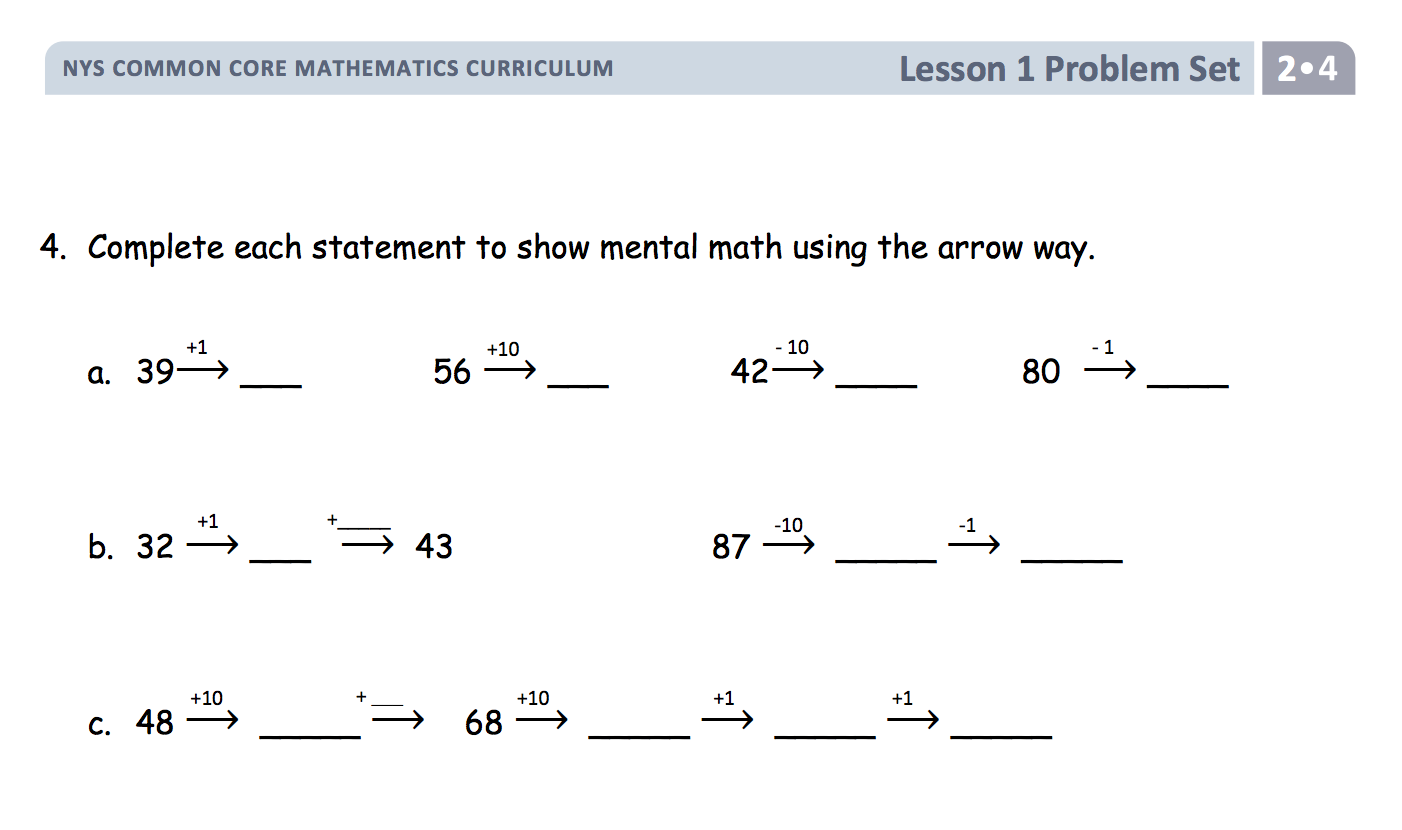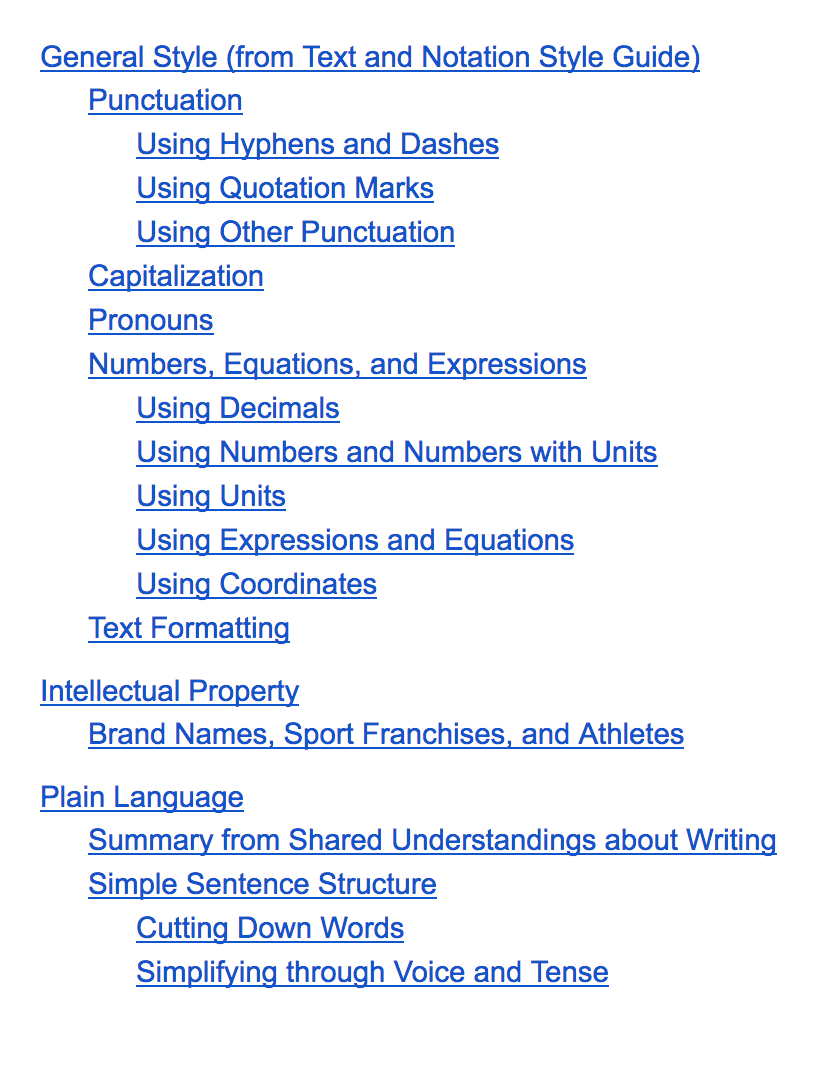November 19, 2015
by Bowen Kerins
A little more with my second-grade son, age 7, about how he does addition and subtraction, compared with “the Arrow Way” from EngageNY.
“Would you rather do an addition problem or a subtraction problem?”
“Ummmmm…”
“Alright I’ll pick one of each. Tell me how to do 39 + 23.”
“It equals 62.”
“How did you do it?”
“By adding the 9 and the 3 first, and then adding the tens.”
“How many tens?”
“Six tens.”
“But I only see five tens.”
“That’s because 9 plus 1 equals 10.”
“Oh, that’s really cool. Hey, how would you do 62 – 23?”
“Ummmm… 62 minus 23… 62 minus 23… it equals (whisper) 39.”
“How did you do it?”
“Just by … well, I just knew the way I did it before, and minused it.”
“I don’t know what you mean. Tell me more about how you did it!”
“I just counted down.”
“So, you counted down one at a time? Like 62, 61, 60, 59…?”
“Yeah yeah!”
“Really, you counted all 23 numbers down? You didn’t skip any? I didn’t hear you count all those numbers. I think you used a shortcut.”
“No, I just counted them in my brain. All the way down.”
“Ok, what would you do for 62 – 51?”
(Very fast.) “Uh, 11.”
“So, how did you do that so fast? You didn’t count all the numbers, right?”
“Yeah I counted them really fast!!”
“Come on, what did you really do?”
“Well, I counted it down really fast. 62 minus 50 equals 20, minus 1 equals 11. Wait wait wait, 62 minus 50 is 12, not 20! Silly.” (He often mixes up “twelve” and “twenty” in speech, but writes it correctly.)
“Could you do 62 – 51 using the arrow way?”
“No, you can’t. It’s impossible. You would get bored. Minusing 10s is boring.”
“Well, what about writing a minus 50 arrow?”
“You can’t do that! It’s not in the rule.”
“What if I told you that you could change the rule and use whatever numbers you want on the arrows?”
“Nah, you can’t do that. The rule stays as a rule. You can’t change it.”
“Let’s try one more subtraction, then we’re done. But you have to tell me out loud everything you do. Ok? It’s 100 minus 37.”
“Ok. 100 minus 30, then minus 7, equals 77.”
“What do you think?”
“77 is the answer.”
“How did you get that?”
“100 minus 30 is 70, then … no no no wait a second … it’s 63 instead of 77!”
“How did you get that?”
“Wah wah wah wahhhhhh.”
“Really?? Ok you got two different answers. 77 and 63. Are any of those the right answer?”
“63 is the real right answer.”
“What would you say to someone who got 77, to help them get the right answer?”
“Dude, just minus 7 and you’ll get the right answer.”
“What would this problem look like with arrows?”
“100 arrow -10 90 arrow -10 80 arrow -10 70 arrow -1 69 arrow -1 68 arrow -1 …”
“Okay wait. How many arrow -1s are there going to be?”
“Seven.”
“So why not just make one arrow -7 instead of seven arrow -1s?”
“No. You just can’t do that. It’s not in the rule. Boom bum bum!”
“Ok let me show you a choice. 100 arrow -30 70 arrow -7 63.”
“That’s not the way we do it in math class!!”


